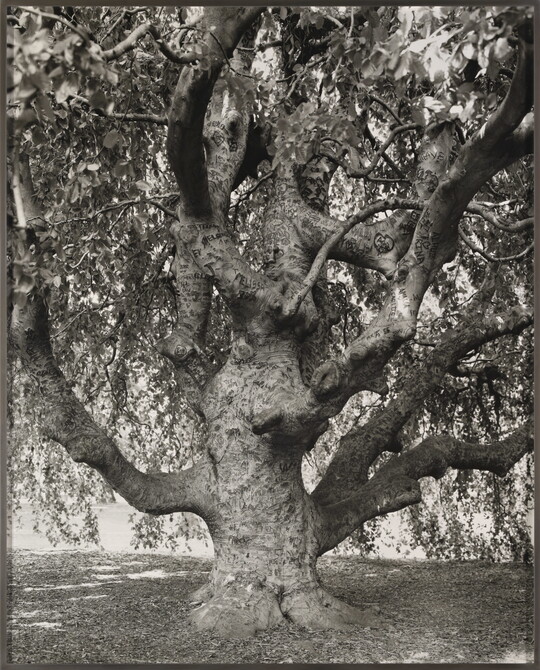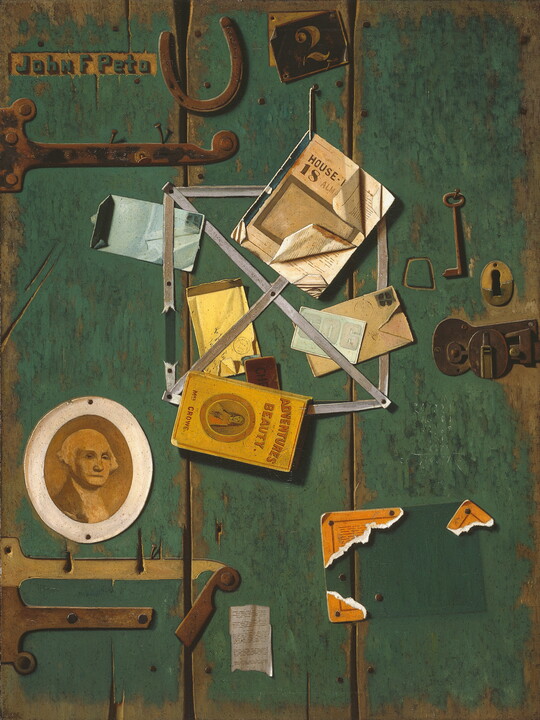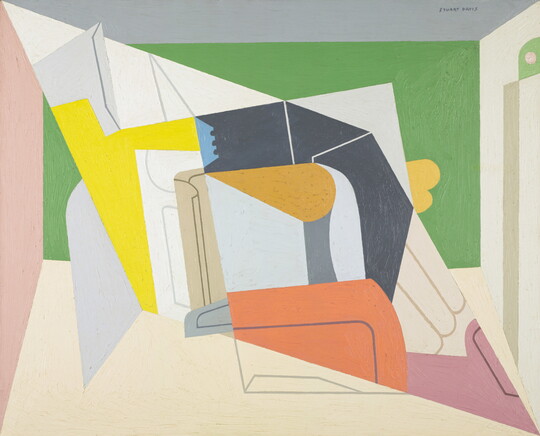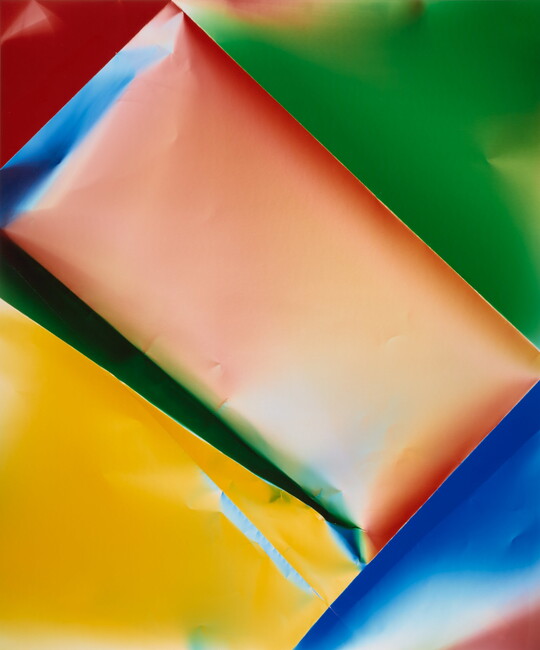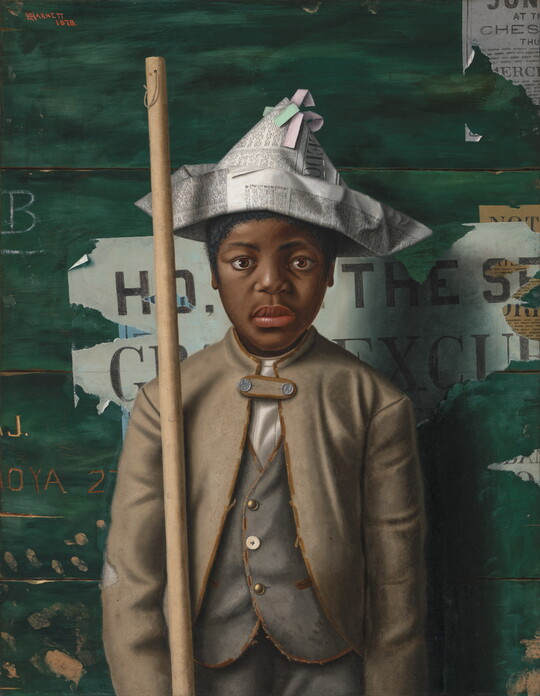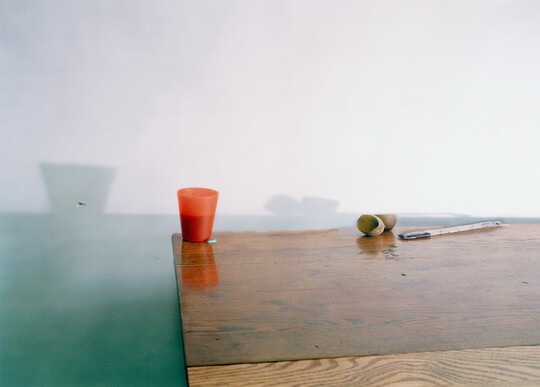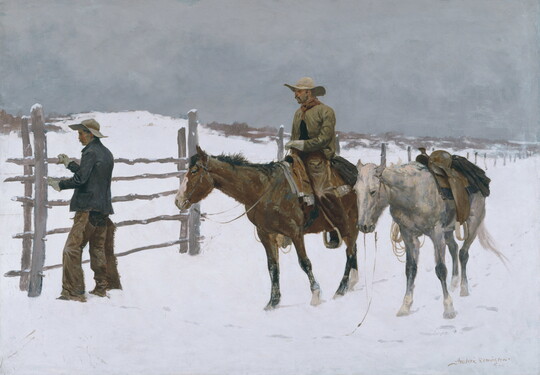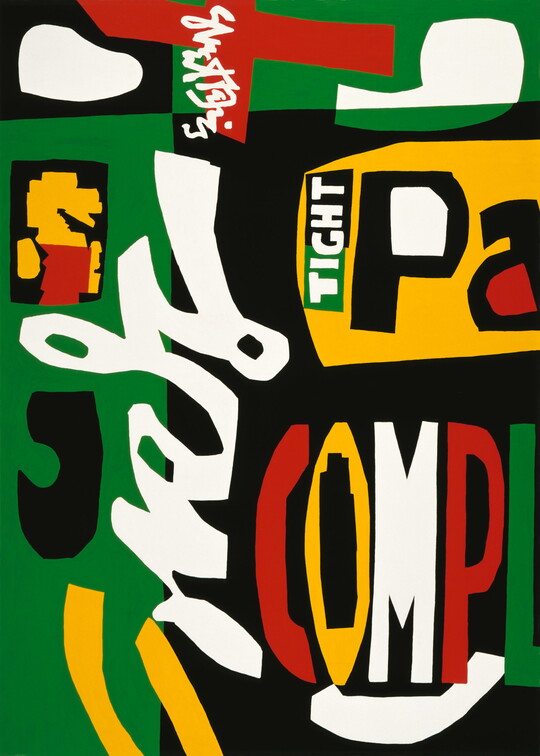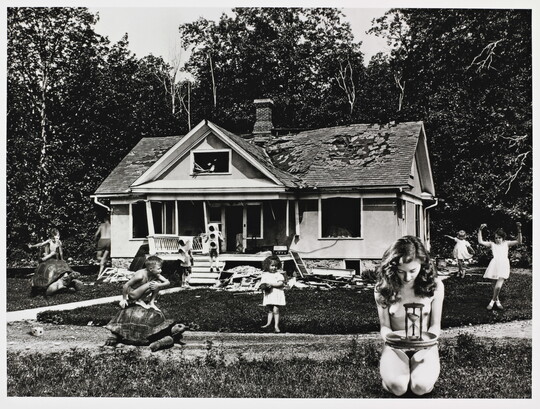

Artwork Image
Photo:
Controls
The Hunter's Return
Object Details
-
Date
1845
-
Object Type
Paintings
-
Medium
Oil on canvas
-
Dimensions
40 1/8 x 60 1/2 in.
-
Inscriptions
Recto:
signed and dated, l.c.: T.Cole \ 1845
-
Credit Line
Amon Carter Museum of American Art, Fort Worth, Texas
-
Accession Number
1983.156
-
Copyright
Public domain
Object Description
In this idyllic valley scene, a settler family has carved out space in the woods for a small farm. The painting suggests that they live in a bountiful relationship with nature: Father and son stride out of the woods carrying the prize of a successful hunt, and fresh cabbages button the slope descending toward the lake.
By the time Cole completed this work, industrial development had already diminished the forests of the northeastern United States. From his home in Catskill, New York, the artist witnessed deforestation from railroad construction and leather tanning, and he lamented what he called the “ravages of the axe.” Perhaps The Hunter’s Return is a response to these environmental changes. Portraying a small cabin nestled in the woods, the picture offers a nostalgic rendering of agrarian rather than industrial ideals, the stumps in the foreground symbolizing both Euro-American progress and nature’s fragility.
—Text taken from the Carter Handbook (2023)
-
Wild Spaces, Open Seasons: Hunting and Fishing in American ArtOctober 7, 2017–January 7, 2018
Wild Spaces, Open Seasons brings together iconic works that explore outdoor subjects from the early 19th century to World War II, exploring American artists’ fascination with depicting a communion with nature that was receding in the face of industrialization.
-
From Remington to O’Keeffe: The Carter’s Greatest HitsOctober 6, 2018–March 22, 2019
During the renovation, this exhibition features highlights from the permanent collection, including paintings, photographs, and sculptures, by some of America’s most renowned artists.
Additional details
Location: On view
See more by Thomas Cole
Tags
Video:
Video:
Audio:

Visual Description: The Hunter's Return
-
This large-scale (40 1/8 inches tall, 60 ½ inches wide), scenic view sits horizontally in a gold, ornately carved, wood frame approximately 7 inches wide. The top two-thirds of the painting focuses on an area of the wilderness during the fall as the sun sets off in the distant left behind the rugged landscape. In the bottom third of the painting, Cole captures a domestic scene.
The action happens at the bottom of the canvas. Two men, a little left of center, are in profile and walking toward the scene depicted on the right side of the canvas, holding a stick over their shoulders between them that holds a slain deer hanging from the stick by its bound legs. A clean-shaven young man is on the left end of the stick and an older man with a full, brown beard holds the right side. The young man holds a rifle in his left hand, and his right hand grips the stick with the deer. The man on the right holds his hat in his left hand and waves it in the air his at family who appear in the bottom right of the canvas.
A little boy in a white shirt with a long rifle resting on his left shoulder has his back to the viewers, as well as his dad and brother, as he leads the way across a bridge made out of long, narrow logs on the way to their garden, log cabin, and the other members of the family. A younger sister looks in the direction of the young boy while hugging a black-and-white dog. A mother wearing a pink dress and white apron holds up a baby dressed in white, just a few inches up and to the left of the young girl and dog. An older girl stands in the shadows of the doorway of the cabin, and a black dog is to the right of her, trying to sneak a piece of meat off of a bench that sits along the front of the cabin.
The scene includes a small vegetable garden that has four or five rows of green crops growing, with a colorful patch of yellows, reds, and whites in one of the corners closest to the viewer. Immediately next to the garden is the cabin. The front of the single-story cabin is angled toward the right side of the scene; the spine of the roof runs left and right, and a chimney sticks out on the far right of the cabin. A faint thread of smoke leaves the top of the chimney. Sunlight highlights the left side, which has two small windows. A covered porch is visible off the backside of the cabin, and the front of the cabin is completely covered in shadow. Windows flank the door where the older girl stands.
Beautiful foliage, majestic mountains, and sky fill most of the painting. Bright red and orange leaves on the shorter trees pop in the dark clusters of dense forest. Orange, yellow, and red leaves on bushes and trees frame the cabin. In the middle of the canvas, back in the distance, there is a lake surrounded by large rocks, fall foliage, and hills that lead to mountains. The tallest point of the tan, rocky mountain angles up to the left. Several tall trees on the left and one evergreen on the right pierce the blue sky that is filled with scattered, fluffy white clouds. The sun is not visible behind the trees and mountains on the left, but it illuminates the left side of the tallest mountain peak, parts of the garden, and the house in the bottom right of the painting.
Below all of the action, along the bottom of the canvas in the foreground, hints of hostility toward the earth are suggested by the multiple tall and short stumps, two large chopped-down tree trunks, and the hunted deer.
Thomas Cole’s audiences adored his landscape paintings, which allowed him to use American scenery as a way of storytelling. In 1844, Cole was commissioned to paint a major artwork for an important New York patron, which is when he painted The Hunter’s Return.
-
What is a landscape painting?
Why is the grandeur of the American landscape such a compelling subject?
Why are land and the landscape so important to the national identity of the United States?
How might a work of art reflect or relate to important moments in history?
Why are certain groups left out of the national imagination?
-
Grades Pre-K–1
Students will create a layered landscape exploring shape and texture. First, students will draw their own landscape using geometric shapes. Then, they will make rubbings of different texture plates in varying sections of their landscapes (one plate for the ground, another for the sky). If they would like, students can then draw in other landscape elements such as trees, mountains, or grass.
Grades 2–6
Read N. Scott Momaday’s “The Delight Song of Tsoai-talee.”
Both Cole and Momaday show great reverence for nature by highlighting the beautiful details of its components. Students will write a poem about this painting in the style of Momaday’s poem. Students should find three items in the painting and write one line describing each, starting with “I am.” After writing these, students should consider what mood these descriptions convey. Now, they will write a sentence using the same format as Momaday’s concluding line, “You see, I am ____, I am ____.” Example: “I am the brown cap waving above. I am the delicate apron that covers a mother. I am the warm, furry dog enjoying a hug. You see, I am soft, I am soft.”
Grades 9–12
As a class, investigate the primary resource, “Essay on American Scenery” (1836) by Thomas Cole. Together discuss and summarize Cole’s five essential elements of a landscape. Ask students to discover and name the natural resources in this landscape. Cole used them to symbolize what he thought was unique about the young American nation. Ask students to think about a place they would choose to represent in a work of art. Students will write the five elements that would be essential to include in an image of their place and why they chose them. Ask students to sketch the place they chose, including the five elements.
-
Grades 2–4
Full S.T.E.A.M. Ahead in Art Exploration (Interactive)
Let the Carter’s collection be a source for discovering artists’ use of math, science, and engineering concepts as creative fuel for their work. Make connections between S.T.E.M. processes and art.
Learn more and register by visiting Connect2Texas and filter for “Amon Carter Museum of American Art.” If you have questions, contact us by email or call 817.989.5011.
Share Educator Resources
Amon Carter Disclaimer
This information is published from the Carter's collection database. Updates and additions based on research and imaging activities are ongoing. The images, titles, and inscriptions are products of their time and are presented here as documentation, not as a reflection of the Carter’s values. If you have corrections or additional information about this object please email us to help us improve our records.
Every effort has been made to accurately determine the rights status of works and their images. Please email us if you have further information on the rights status of a work contrary or in addition to the information in our records.
Related Works
-
Weeping Beech, Brooklyn Botanic Garden, Brooklyn, 2011
Mitch Epstein
Gelatin silver print
P2012.13
-
A Closet Door, 1904-1906
John Frederick Peto
Oil on canvas
1983.158
-
Egg Beater No. 2, 1928
Stuart Davis
Oil on canvas
1996.9
-
Zerogram, 2017
Ellen Carey
Dye coupler print
P2018.40
-
Attention, Company!, 1878
William M. Harnett
Oil on canvas
1970.230
-
Untitled #52, 2002
Laura Letinsky
Dye coupler print
P2007.3
-
The Fall of the Cowboy, 1895
Frederic Remington
Oil on canvas
1961.230
-
Blips and Ifs, 1963-1964
Stuart Davis
Oil on canvas
1967.195
-
The Time Game, 2011
Jane Hammond
Gelatin silver print
P2011.29


